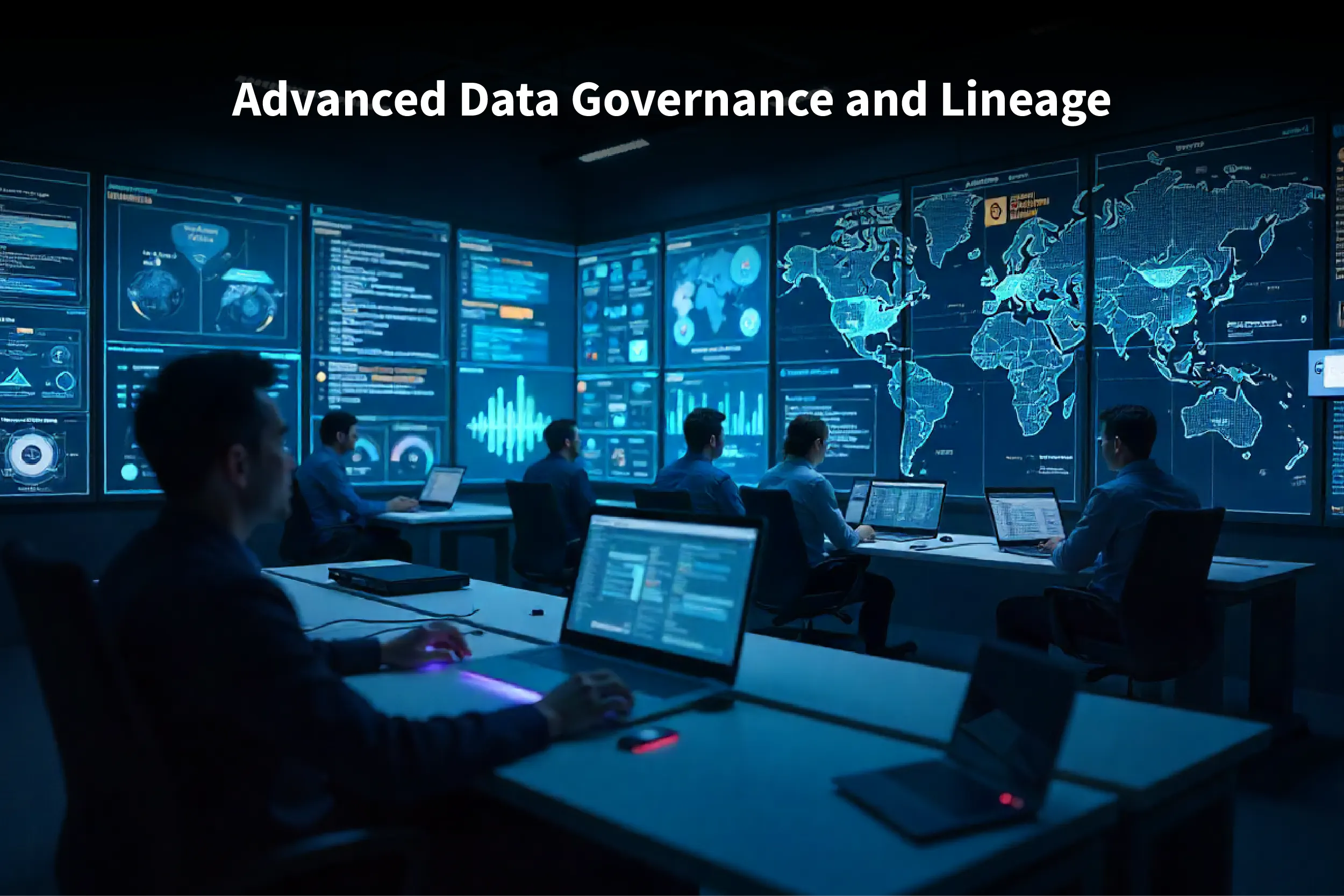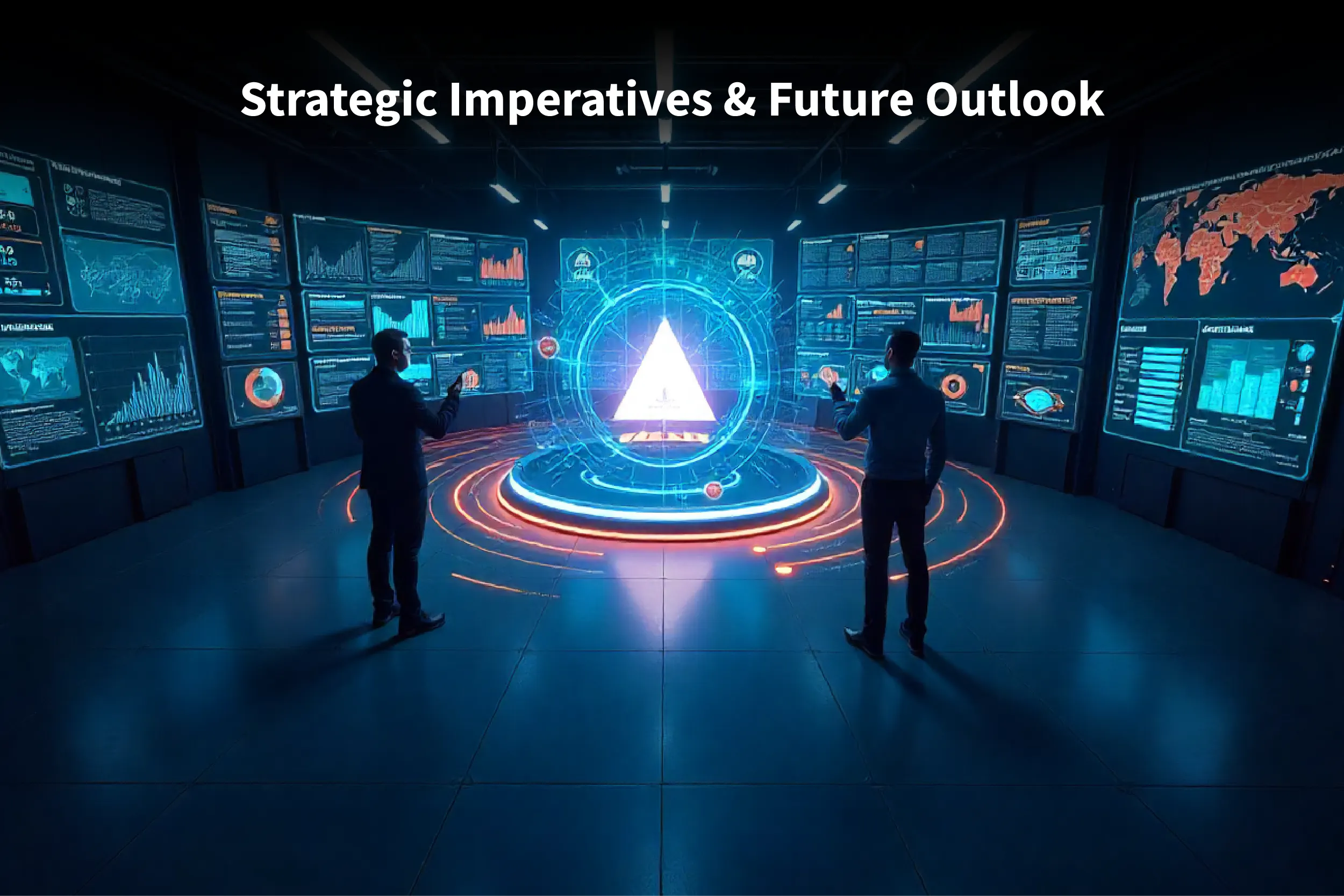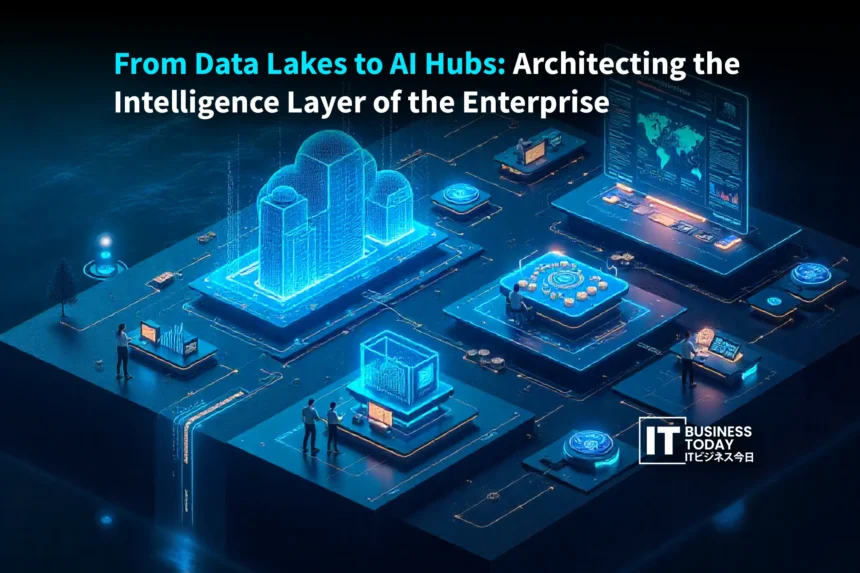Data lakes were a breakthrough in storing massive amounts of information. They made reporting and business intelligence easier and centralized enterprise data in one place. But when it comes to machine learning, they fall short. Teams struggle to access consistent, timely features, creating friction between data engineers and ML engineers. Training and production often operate on different data, slowing deployment and reducing impact.
The solution is a shift from passive storage to active intelligence platforms. AI hubs do more than hold data. They make sure everyone follows the same standards, keep the pipelines running without hiccups, and let teams grab the features they need without waiting. Instead of just storing data, AI hubs focus on how work actually gets done, so insights reach the people who need them quickly. For any company serious about scaling AI, this isn’t optional. It’s the way to stay ahead in a world where using intelligence fast makes all the difference.
From Static Stores to Active Platforms
For years, data lakes and warehouses carried the weight of enterprise analytics. They were excellent at storing massive volumes of information and served well for reporting and business intelligence. Yet, when machine learning entered the scene, their cracks showed. These systems struggled to deliver features in real time, slowed discovery for data scientists, and lacked the governance muscle that enterprise AI now demands.
According to Google Cloud’s AI Business Trends 2025, organizations are no longer content with passive storage. They are shifting toward intelligent systems that accelerate experimentation and bring AI into everyday decision-making. This change is not just about scale. It is about moving from a static pool of data to a living platform that fuels outcomes.
Here, the idea of a data mesh becomes relevant. The mesh treats data as a product, owned and managed by domain teams. However, without a strong execution layer, the mesh risks fragmentation. This is where the it steps in. It does not centralize all the data, but it centralizes the standards and operational practices. As a result, enterprises gain speed without losing governance.
Also Read: Japan’s Next AI Leap: Vision-Language-Action Models Reshaping Robotics
The AI Impact on Industries 2025 report shows how businesses are already capitalizing on multimodal AI, AI agents, and smarter search. The message is clear. Platforms that standardize production while allowing decentralized development become the real engines of intelligence.
So the value proposition is simple. It turns raw information into structured intelligence, cut the time from data to value, and give enterprises a consistent way to scale. The leap from storage to active platform is not a technical detail. It is the difference between holding information and actually using it to compete.
Core Architectural Components of a True AI Hub
Every serious AI hub rests on three core pillars: feature stores, MLOps automation, and advanced governance. Together, they define whether the platform is just a storage wrapper or a true engine of intelligence.
Feature Stores: The Brain of the Hub
At the heart of the hub sits the feature store. It acts as a centralized service where standardized machine learning features are created, stored, and shared. Its dual role is critical. On one side, it serves features at low latency for live applications.
On the other, it supplies batched features for offline training. By unifying both, the feature store eliminates one of the most notorious challenges in enterprise AI: the gap between training data and production data. This alignment reduces wasted effort and speeds up deployment.
MLOps Standardization and Automation
A second component is the operational backbone: MLOps. OpenAI’s AI in the Enterprise guide highlights the need for systems thinking, where experimentation and production live in one continuous pipeline. This means version control for code, data, and features, as well as CI/CD practices for models. The transition from a lab project to a production-grade service must be seamless.
OpenAI’s updates to business plans, including secure connectors and flexible deployment controls, show how serious enterprises are about reducing friction. In short, automation is not optional. It is the difference between running a few pilots and scaling hundreds of models.
Advanced Data Governance and Lineage

Finally, governance makes or breaks trust. NIST’s AI Standards Zero Drafts and its Control Overlays for Securing AI Systems underline the importance of rigorous documentation, lineage tracking, and layered security.
In practice, this means every feature, dataset, and model needs lineage tracking. Security controls such as access management and masking should apply at the feature level, not just at the database. Moreover, monitoring model drift ensures decisions remain consistent over time.
When these three components come together, the AI hub stops being an experiment. It becomes an operational product that scales safely, delivers value faster, and builds the trust enterprises cannot afford to lose.
Architectural and Operational Shifts
A true AI hub is not just technology stitched together. It is an operating model shift. Enterprises that treat it as an internal product, not a side project, are the ones that get ahead. Microsoft’s Work Trend Index 2025 shows that ‘Frontier Firms’ already understand this. They run dedicated platform teams that build and maintain the AI hub as a product. These teams deliver self-service tools to ML engineers, letting them experiment faster without reinventing infrastructure each time. That is platform engineering in action, and it drives scale. Traditional data lakes helped store information, but they do little to support this level of operational agility.
Equally important is the integration of DataOps. Data pipelines that feed features into models must be reliable, monitored, and auditable. Without this rigor, even the smartest model is just an unreliable prototype. Observability is key. Tracking pipeline health and data quality in real time ensures that when a model fails, you know why, and when data drifts, you catch it before it breaks business outcomes.
Future-proofing also matters. The rise of multimodal and generative AI means hubs cannot limit themselves to structured data alone. Text, images, video, and sensor streams demand vector databases for high-dimensional indexing. Without this layer, enterprises risk building hubs that are obsolete before they are fully rolled out.
Security by design ties it all together. Controls must be layered from the raw data tier to the API endpoints serving live models. Role-based access, encryption, and masking applied consistently across the stack prevent costly breaches and preserve trust.
Microsoft’s AI Trends 2025 points to a bigger reality. AI is no longer just a tool at work or at home. It is becoming an integral system powered by agents. To realize ROI, firms need hubs that are resilient, observable, and secure. The architectural shift is not about tools alone. It is about adopting an operating mindset where the AI hub becomes the invisible engine of scale.
Strategic Imperatives & Future Outlook

AI hubs are not built for vanity. They exist to prove measurable impact. That means moving away from fluffy promises of ‘better decisions’ and toward hard numbers: reduced operating costs, higher customer conversion rates, faster product cycles.
Traditional data lakes helped store massive amounts of information, but McKinsey’s State of AI 2025 shows that storing data alone is not enough. Nearly every company is investing in AI, yet only 1 percent feel they have reached maturity. The difference lies in whether an organization treats the hub as a core system of value capture or as another side experiment.
The ethical layer is non-negotiable. Bias detection, fairness checks, and explainability must run before deployment, not as damage control after. The hub becomes the checkpoint where responsibility is engineered into the pipeline. Without that, the ROI story collapses into reputational and regulatory risk.
Generative AI raises the stakes further. To stay relevant, the hub must plug in large language models and vector stores so teams can build domain-specific applications quickly. This is not a future add-on; it is a present requirement. McKinsey’s research on the ‘gen AI paradox’ makes it blunt: companies love experimenting, but unless those experiments turn into scalable agents that drive bottom-line results, the investment fizzles.
The path forward calls for discipline. Phase one, stand up a feature store MVP. Phase two, automate MLOps pipelines. Phase three, extend governance and GenAI integration. Companies that move in phases, measure outcomes, and bake ethics into the foundation will not just keep up with AI. They will define its enterprise future.
Seizing the Intelligence Advantage
The AI hub changes the game. IT is no longer just a back-office function. It now drives real business value. While traditional data lakes helped store massive amounts of information, AI hubs go further. With standardized features, smooth-running MLOps pipelines, and built-in governance, data quickly becomes actionable insights for teams. Generative AI and analytics on top make decisions faster and operations leaner.
McKinsey’s research shows that experiments alone don’t cut it. Scalable AI requires systems that actually work day to day. Companies that ignore the gap between their data setup and AI goals risk falling behind. Those that embrace it gain a clear competitive edge.







